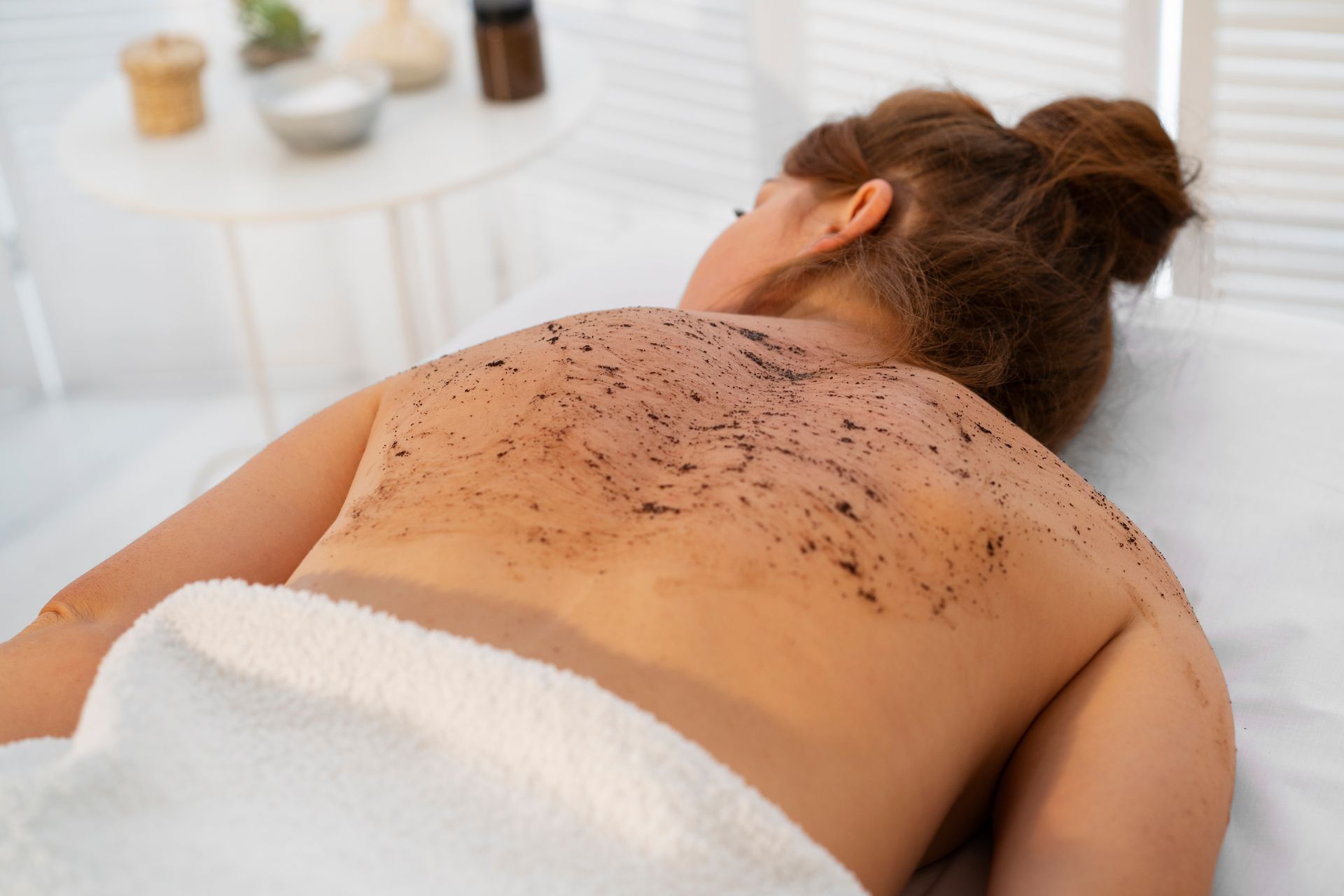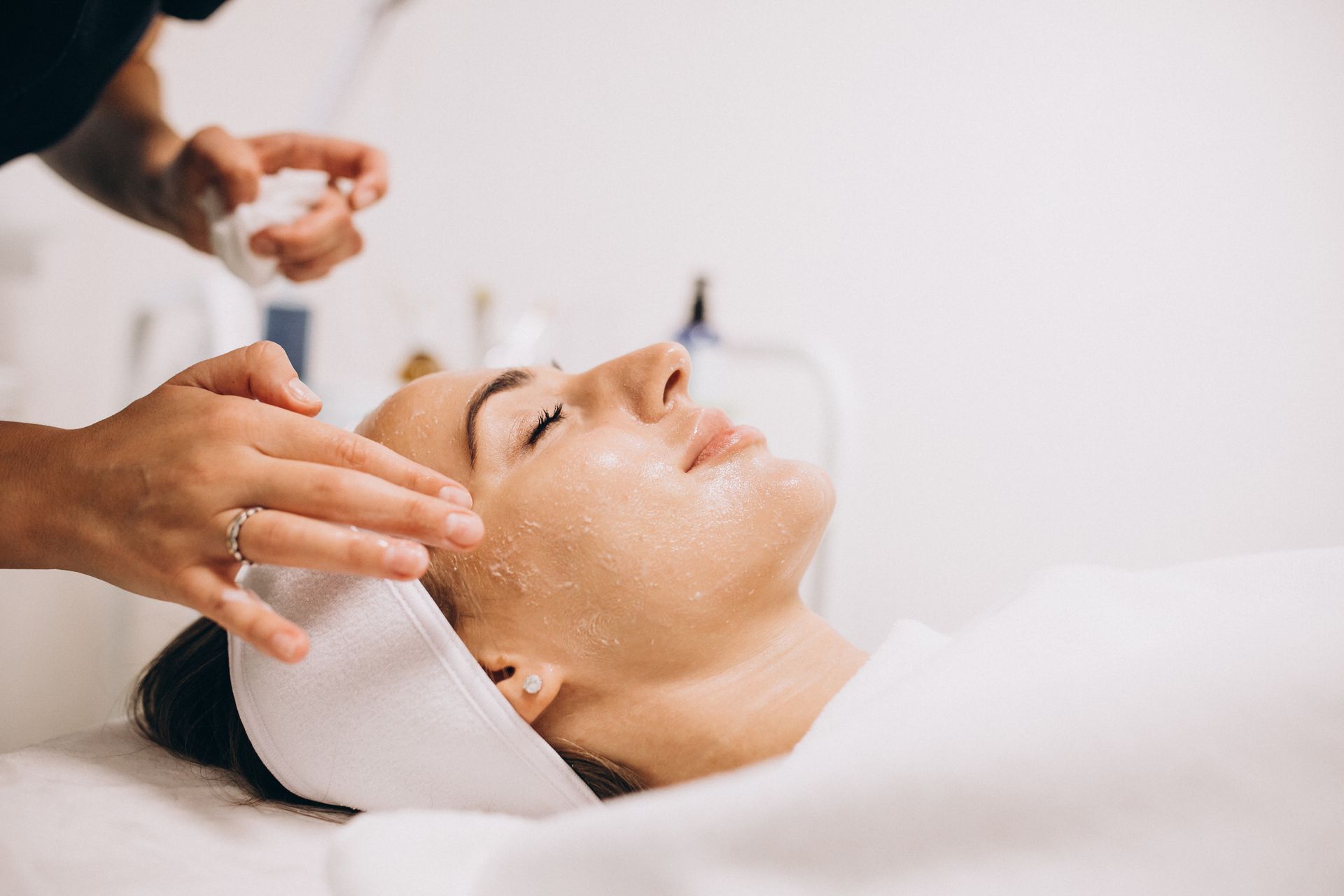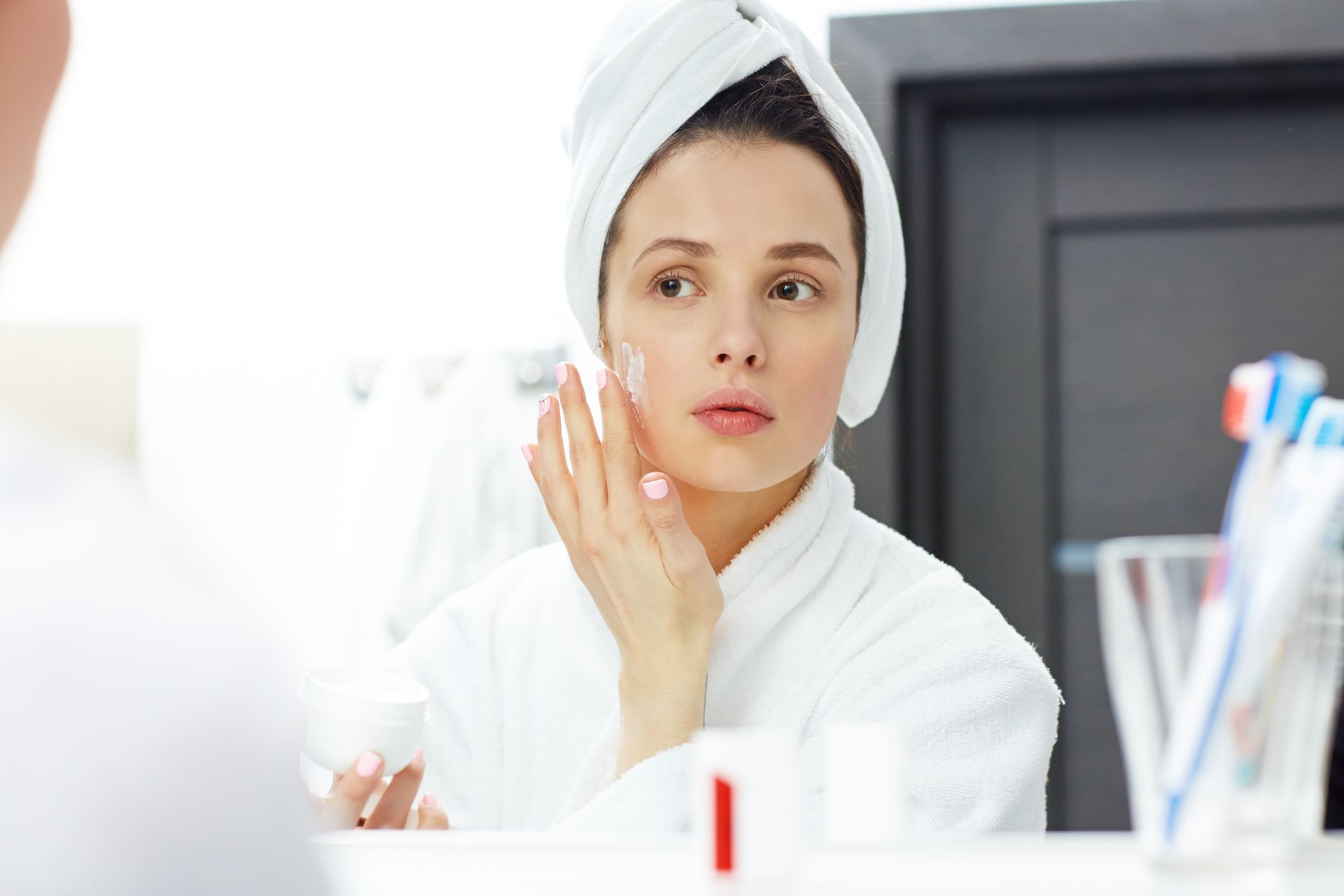How Does Laser Hair Removal Offer Exfoliating Benefits to Your Skin?
In the pursuit of radiant and healthy skin, the practice of exfoliation holds a significant place in skincare routines. Exfoliation involves the removal of dead skin cells, promoting a smoother, brighter complexion and enhancing the overall texture of the skin. As we delve into the world of skincare, laser hair removal emerges as a multifaceted solution that goes beyond its primary purpose of reducing unwanted hair.
This overview aims to explore the symbiotic relationship between
laser hair removal and exfoliation. We will unravel the significance of exfoliation in skincare, shedding light on its transformative effects. Also, we'll take a closer look at how laser hair removal, a popular method for
achieving smooth skin, contributes to the exfoliating benefits that go hand in hand with a healthy and vibrant complexion. Join us in this journey as we uncover the intertwined realms of laser hair removal and the exfoliation essential for maintaining skin vitality.
Mechanism of Laser Hair Removal
Laser hair removal operates on the principle of selective photothermolysis, a process that targets melanin, the pigment responsible for hair color. During the procedure, a concentrated beam of light is directed onto the targeted area. The melanin in the hair absorbs this light, converting it into heat. This heat is then absorbed by the hair follicles, damaging them and inhibiting future hair growth. The specificity of the laser's wavelength ensures that it predominantly targets the dark pigments in the hair, sparing the surrounding skin. The effectiveness of laser hair removal is influenced by factors such as hair color, skin type, and the growth phase of the hair follicles.
Laser hair removal is designed to selectively target hair follicles without causing significant damage to the surrounding skin. Modern laser systems incorporate cooling mechanisms, such as built-in cooling systems or applied cooling gels, to protect the skin and minimize discomfort during the procedure. The laser emits a controlled amount of energy, effectively penetrating the skin to reach the hair follicles beneath the surface. The melanin in the hair absorbs the energy, leading to thermal damage within the follicle. This interaction is carefully calibrated to achieve hair reduction while maintaining the integrity and safety of the skin's surface. The controlled precision of laser hair removal distinguishes it as a precise and
effective method for achieving lasting hair reduction.
Exfoliating Benefits of Laser Hair Removal
Removal of Dead Skin Cells
One of the noteworthy exfoliating benefits associated with laser hair removal is the removal of dead skin cells. The process involves the targeted application of laser energy to the hair follicles, which not only inhibits hair growth but also encourages the shedding of dead skin cells on the skin's surface. As the treated area heals post-procedure, the outermost layer of the skin undergoes a natural exfoliation process. This shedding of dead skin cells reveals a fresher, more rejuvenated skin layer underneath. The removal of these accumulated dead cells contributes to a smoother complexion and a more even skin tone, enhancing the overall radiance of the skin.
Smoother and Brighter Skin Texture
Laser hair removal's exfoliating benefits extend to promoting a smoother and brighter skin texture. By targeting the hair follicles and inducing controlled damage, the procedure stimulates the skin's natural regenerative processes. As the skin heals, it produces new collagen and elastin, essential proteins that contribute to skin firmness and elasticity. This rejuvenation process not only aids in reducing the appearance of fine lines and wrinkles but also results in a smoother skin texture. The removal of unwanted hair, coupled with the skin's renewed vitality, leads to a brighter complexion. Overall, the exfoliating effects of laser hair removal contribute to a revitalized and more luminous skin texture that lasts beyond the immediate post-treatment period.
Comparison with Traditional Exfoliation Methods
Laser Hair Removal vs. Physical Exfoliants
Laser hair removal presents a distinctive approach to exfoliation when compared to traditional physical exfoliants. While physical exfoliation methods involve the mechanical removal of dead skin cells using scrubs, brushes, or abrasive tools, laser hair removal operates through a targeted energy beam. Unlike physical exfoliants, laser hair removal doesn't rely on abrasive particles that can potentially irritate the skin. Instead, it leverages the heat generated by the laser to selectively target hair follicles, simultaneously encouraging the shedding of dead skin cells. This alternative method minimizes the risk of microtears often associated with physical exfoliation, providing a gentler yet effective means of achieving smoother and brighter skin.
Chemical Exfoliation vs. Laser Hair Removal
In contrast to chemical exfoliation methods, such as peels or acids, laser hair removal offers a distinct exfoliating approach. As a result of dissolving the bonds between dead skin cells, chemical exfoliants facilitate their removal. Laser hair removal, on the other hand, induces exfoliation through a controlled thermal process. While chemical exfoliation primarily targets the outermost layer of the skin, laser hair removal's impact extends deeper, addressing the hair follicles beneath the surface. The thermal energy prompts the shedding of dead skin cells as part of the skin's natural regeneration. Comparatively, the exfoliating benefits of laser hair removal result from its dual action on both hair reduction and skin renewal, offering a comprehensive and integrated approach to achieving a smoother and more vibrant skin texture.
Preparation and Aftercare for Exfoliating Benefits
Effective preparation before laser hair removal sessions is crucial for optimizing exfoliating benefits. It is advisable to avoid sun exposure in the lead-up to the procedure, as tanned skin may heighten the risk of complications. Shaving the targeted area a day or two before the session ensures that the laser can more effectively target the hair follicles without interference from longer hair. Also, refraining from using harsh chemical products on the skin and avoiding perfumes or lotions on the treatment day help prevent potential skin irritation. Clear communication with the practitioner about any medications, recent treatments, or skin conditions is essential for a safe and successful session. By adhering to these pre-session guidelines, individuals can enhance the exfoliating benefits and overall efficacy of laser hair removal.
Post-Treatment Skincare Routine
After laser hair removal, a carefully crafted skincare routine is integral to maximizing exfoliating benefits and supporting the skin's healing process. Immediately following the session, applying a soothing and hydrating lotion can help alleviate any temporary redness or discomfort. It is advisable to avoid sun exposure and use sunscreen to protect the treated area. While the skin naturally exfoliates in the days following the procedure, incorporating gentle exfoliating agents, such as mild scrubs or chemical exfoliants, into the skincare routine can assist in the removal of dead skin cells. Hydration plays a crucial role in maintaining the skin's suppleness, so regular moisturizing is recommended. By attentively following a post-treatment skincare routine, individuals can nurture the exfoliating benefits of laser hair removal, ensuring a smoother, brighter, and revitalized skin texture.
Addressing Common Concerns and Misconceptions
Safety is paramount in the realm of laser hair removal, and addressing common concerns is essential. Prior to undergoing the procedure, individuals may express apprehensions about the safety of laser exposure on their skin. However, modern laser technologies incorporate safety features, such as cooling mechanisms and precise targeting, to minimize risks. It is crucial for practitioners to conduct thorough assessments, taking into account skin type, hair color, and medical history, to ensure the procedure's safety. Practitioners should communicate transparently about safety measures, emphasizing the controlled nature of the laser's energy application and the importance of adhering to pre-session guidelines.
Potential Side Effects and Their Management:
Understanding potential side effects is key to informed decision-making. There may be temporary redness, swelling, or mild discomfort in the treated area. These effects are typically short-lived, and practitioners can provide guidance on managing them. Application of soothing lotions or cold compresses can alleviate discomfort, and avoiding sun exposure is advised to prevent further irritation. It's essential for individuals to report any unexpected reactions promptly to their practitioners for appropriate guidance. By addressing concerns about safety and providing comprehensive information on potential side effects, practitioners contribute to a more informed and confident experience for individuals considering laser hair removal.
Expert Opinions and Dermatological Insights
In the realm of skincare, professionals provide tailored recommendations to optimize the benefits of exfoliation, particularly in the context of laser hair removal. These recommendations extend beyond the procedure itself and encompass comprehensive skincare routines. Professionals advise on suitable cleansers, moisturizers, and sunscreens to support skin health pre and post-treatment. They may advocate for the inclusion of gentle exfoliating agents, emphasizing the importance of nurturing the skin during the healing process. Dermatological insights contribute to the development of effective skincare strategies, ensuring individuals receive expert guidance for maintaining optimal skin condition and maximizing the benefits of exfoliation through laser hair removal.
As skincare experts, dermatologists provide valuable insight into the exfoliating benefits of laser hair removal. Their insights emphasize the nuanced relationship between exfoliation and overall skin health. Dermatologists recognize laser hair removal not only as an effective hair reduction technique but also as a method that contributes to natural exfoliation. By shedding dead skin cells during the healing process, laser hair removal promotes a smoother, brighter complexion. Dermatologists often endorse the procedure for its dual benefits, emphasizing the importance of individualized treatment plans based on skin type, concerns, and desired outcomes.
Conclusion
The exfoliating benefits of laser hair removal offer a multifaceted approach to achieving radiant and healthy skin. As we recapitulate the journey through this transformative procedure, it becomes evident that beyond its primary goal of hair reduction, laser hair removal contributes to the natural exfoliation of the skin. The shedding of dead skin cells, coupled with the renewal of collagen and elastin, results in a smoother, brighter complexion that endures beyond the immediate post-treatment period. Armed with the insights of dermatologists and skincare professionals, individuals can make informed choices for the well-being of their skin. By embracing laser hair removal as a holistic skincare method, one not only achieves effective hair reduction but also unlocks the exfoliating benefits that contribute to a revitalized and luminous skin texture.
BOOK YOUR FREE SESSION










